|
|
Dear colleagues
Officially spring only just started on March 20, 2019. But at PSI spring came early this year. Both literally, as we benefitted from a period of early sunny and mild weather in February and March, but also figuratively, as we started a very early ‘spring cleaning’ at PSI’s SINQ neutron source directly after the winter holiday break.
In 2019 and 2020 SINQ undergoes a major upgrade program. Here the replacement of the whole neutron guide system will directly benefit the entire SINQ instrument suite and all of our users.
|

Marc Janoschek
|
|
In addition, several instruments including the reflectometer AMOR, the powder diffractometer DMC and the triple-axis spectrometer CAMEA are being upgraded as part of the project specifically to enable research on small samples or in extreme environments. The upgrade will result in gain factors of up to 30 for certain instruments. At the same time, we are working on upgrading our data acquisition and control software. Following the upgrade, a total of 14 cold and thermal instruments will be available again to the users.
Personally, particularly as new laboratory head who only joined PSI briefly before the upgrade started, I am excited to witness the dedication, endurance and expertise with which our staff carries out this major project for the benefit for our users.
Marc Janoschek,
on behalf of the Laboratory for Scientific Developments and Novel Materials LDM, Research with Neutrons and Muons - NUM
|
|
Next proposal submission deadlines:
SLS: PX beamlines
deadline: April 15, 2019
more information
SLS: non-PX-beamlines
deadline: September 15, 2019
more information
SwissFEL
deadline: September 15, 2019
more information
SµS
deadline: December 2019
more information
Particle Physics
deadline: January 13, 2020
more information
SINQ (upgrade program 2019-20)
deadline: tba
more information
An overview about all proposal submission deadlines of the PSI facilities can be obtained here.
|
|
|
Electronic localization in CaVO3 films via bandwith control
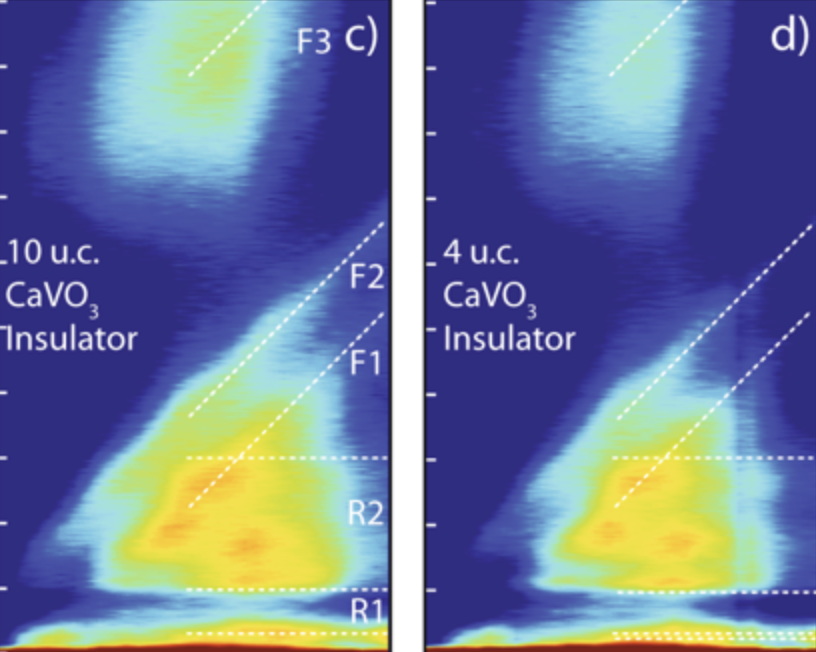 SLS - Towards the design of heterostructures SLS - Towards the design of heterostructures
Understanding and controlling the electronic structure of thin layers of quantum materials is a crucial first step towards designing heterostructures where new phases and phenomena, including the metal-insulator transition (MIT), emerge. Here, we demonstrate control of the MIT via tuning electronic bandwidth and local site environment through selection of the number of atomic layers deposited. We take CaVO3, a correlated metal in its bulk form that has only a single electron in its V4+ 3d manifold, as a representative example. We find that thick films and ultrathin films (≤ 6 unit cells, u.c.) are metallic and insulating, respectively, while a 10 u.c. CaVO3 film exhibits a clear thermal MIT. Our combined X-ray absorption spectroscopy and resonant inelastic X-ray scattering (RIXS) study reveals ...
Read the full story
|
|
|
D.E. McNally et al, npj Quantum Materials 4, 6 (2019)
|
|
|
A manganese hydride molecular sieve for practical hydrogen storage under ambient conditions
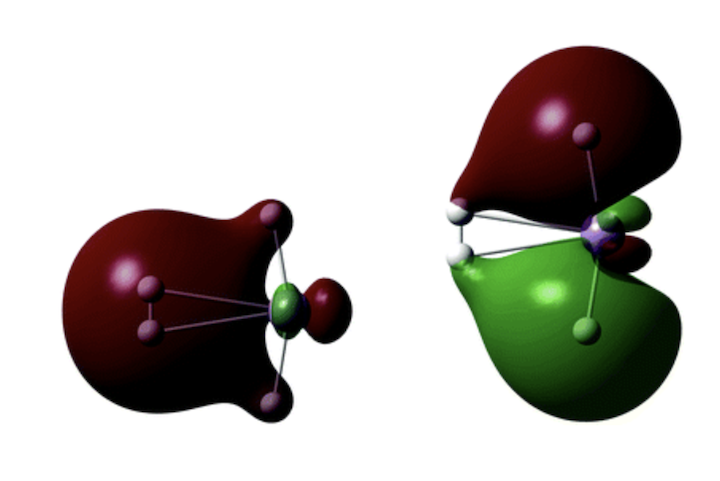
SINQ - Hydrogen storage at ambient conditions
A viable hydrogen economy has thus far been hampered by the lack of convenient hydrogen storage solutions for long hauls and transportation/delivery infrastructure. Current approaches require high pressure and/or complex heat management systems to achieve acceptable storage densities. Development of hydrogen storage solutions operating at near ambient conditions can mitigate the complexity, cost and safety perception issues currently hindering the hydrogen economy. We have assembled a team of experts in both experimental and computational modelling approaches to synthesise and characterise a porous manganese hydride material, which projects to offer roughly four times the volumetric hydrogen storage capacity of 700 bar incumbents ...
Read the full story
|
|
|
L. Morris et al, Energy and Environmental Science, adv. online publication (December 2018)
|
|
|
Magnetism in semiconducting molybdenum dichalcogenides
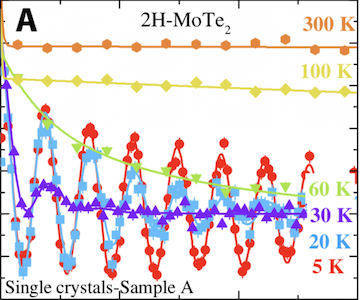 SμS - A new 2D magnetic semiconductor SμS - A new 2D magnetic semiconductor
Transition metal dichalcogenides (TMDs) are interesting for understanding the fundamental physics of two-dimensional (2D) materials as well as for applications to many emerging technologies, including spin electronics. Here, we report the discovery of long-range magnetic order below TM = 40 and 100 K in bulk semiconducting TMDs 2H-MoTe2 and 2H-MoSe2, respectively, by means of muon spin rotation (μSR), scanning tunneling microscopy (STM), and density functional theory (DFT) calculations. The μSR measurements show the presence of large and homogeneous internal magnetic fields at low temperatures in both compounds indicative of long-range magnetic order ...
Read the full story
|
|
|
Z. Guguchia et al, Science Advances 4, eaat3672 (2018)
|
|
|
Towards X-ray Transient Grating Spectroscopy at SwissFEL
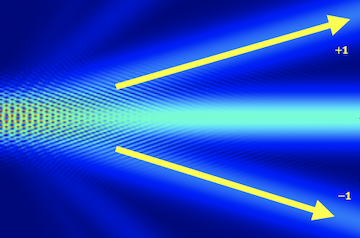 SwissFEL - Probing ultrafast dynamics of matter SwissFEL - Probing ultrafast dynamics of matter
The high brilliance of new X-ray sources such as X-ray Free Electron Laser opens the way to non-linear spectroscopies. These techniques can probe ultrafast matter dynamics that would otherwise be inaccessible. One of these techniques, Transient Grating, involves the creation of a transient excitation grating by crossing X-ray beams on the sample. Scientists at PSI have realized a demonstration of such crossing by using an innovative approach well suited for the hard X-ray regime. The results of their work at the Swiss Free Electron Laser have recently been published in the journal Optics Letters.
Read the full story
|
|
|
C. Svetina et al, Optics Letters 44, 574 (2019)
|
|
|
ERC Consolidator Grant for Paolo Crivelli
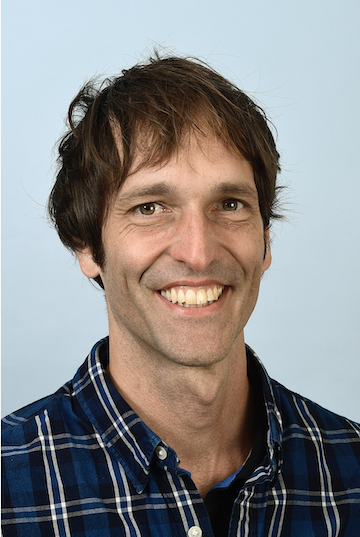 Particle Physics Particle Physics
Dr. Paolo Crivelli (ETH Zurich, Department of Physics, Institute for Particle Physics and Astrophysics) has recently been awarded an ERC Consolidator grant for his project "Mu-MASS" aiming at a new precision measurement of the Muonium 1S-2S transition energy, ultimately with an improvement by three orders of magnitude. Muonium is the hydrogen-like atom formed by a positive muon and an electron. Its energy levels are, in contrast to the case of ordinary hydrogen, completely dominated by Quantum-Electro-Dynamics (QED) and precision QED calculations are currently ahead of experiment. It will be the first time that CW two-photon spectroscopy is applied to muonium. Results will improve our knowledge of the muon mass, test bound state QED and search for physics beyond the Standard Model of Particle Physics. Moreover, it will help to resolve the present 'proton radius puzzle' by providing a determination of the Rydberg constant free of finite size effects. While Dr. Crivelli is located at ETH Hönggerberg, he and his team will spend a large amount of time at PSI and collaborate closely, both, with the NUM laboratories for Muon Spin Spectroscopy LMU and for Particle Physics LTP.
|
|
DORA - The new PSI publication repository goes online
all facilities and users of PSI
On April 8, 2019 DORA-PSI the new repository for publications of PSI staff and users of our facilities will go live. The new system is hosted and maintained by the joint library Lib4RI of of Eawag, Empa, PSI and WSL, and will replace the publication tool of the DUO system that served as the PSI publication database for the last 13 years. All publications registered in DUO are currently being migrated to the new system.
From March 29 on, the import of further publications into DUO will be disabled. Afterwards - from April 8 onwards - you may import your publications into DORA-PSI directly. Of course and as before, DUO will further serve for all other purposes related to the administration of user operation at PSI.
DORA will provide features like green open access and also options for full text search. It will harvest publication metadata from Scopus, Web of Science and the RCSB protein data bank. Also in the new system it will be of utmost importance that you link your publications to the beamlines of PSI where the respective data have been taken.
Should you have any questions about DORA-PSI, do not hesitate to contact Lib4RI per email directly. |
|
TELL - A new high-capacity sample loader
SLS
A new automatic sample exchange system named TELL (high-Throughput Enabling Large capacity sample Loader) has been developed by the MX group for the SLS MX beamlines and the SwissMX fixed target station at the SwissFEL. The TELL system offers enhanced storage capacity, improved reliability and faster sample exchange compared to the existing CATS system, thereby enabling high throughput crystallography at the SLS and the SwissFEL. It successfully entered user operation at the SLS beamline X06SA (PXI) on 01 February 2019. The TELL system is of high importance for the SLS MX beamlines users from academia and industry.
|
|
LENS launches activities to strengthen European neutron science
SINQ
The members of the League of advanced European Neutron Sources (LENS) held their first General Assembly and the first Executive Board meeting on 26 March 2019 in Liblice, the Czech Republic. The consortium adopted and signed Statutes detailing the purpose of LENS, guiding the work of the statutory bodies, and laying the framework for Working Groups responsible for the execution of foreseen activities. The Director of Institut Laue-Langevin (ILL) in France, Helmut Schober, was elected as LENS Chair, and the Director of the ISIS Neutron and Muon Source in the United Kingdom, Robert McGreevy, as Vice-Chair. For the Swiss spallation neutron source SINQ the head of the PSI NUM division Christian Rüegg signed the documents. More information |
|
SμS proposal round 2019
SμS
The recent submission deadline for SμS proposals passed by the end of February. Finally, a total of 178 proposals has been submitted asking for 911 days of beamtime. These are remarkably large numbers taking into account that one of the instruments (LTF) has been taken out of user operation. The largest number of proposals was submitted for GPS (52), followed by DOLLY (44), LEM (37), GPD (27) and HAL-9500 (18). The large number of proposals results in significant overbooking factors for several instruments.
The proposal review committee will gather at PSI on April 11-12. Soon afterwards we aim to inform the users about the results of the beamtime allocation for 2019. The next submission deadline will be in December 2019 for the 2020 beam time period. The exact date will be announced in due time.
|
|
Symposium on Structure Biology for Drug Discovery
SwissFEL
An International Symposium on Structure Biology for Drug Discovery will be held June 25th to 27th at the PSI (main auditorium). Topics center around structure-based methods in drug discovery and include opportunities at XFELs, methods development and the complementary interplay of single particle cryo Electron Microscopy and XFEL analysis. The symposium boasts an impressive list of keynote speakers from industry and academia. There are still available slots for short presentations; please submit your abstract ASAP if you are interested. Seats are limited, so please register in time here. |
|
BVR50: The annual particle physics user meeting 2019
Particle Physics
The annual User Meeting of the Particle Physics at PSI’s ring cyclotron took place January 28-30, 2019. The ring cyclotron went into operation in 1974: 45 years a world-leading facility! In some of the years, two user meetings were held. The 2019 edition was the 50th BVR (‘Benutzer-Versammlung Ring’). A large number of participants filled the auditorium for the open session on Tuesday afternoon, following a motivating theory talk and the presentations of new proposals and ongoing smaller scale efforts, see program.
As over the past ten years, the Monday was spent on in depth reviews of some of the major experimental projects by subcommittees. The BVR committee reviewed all projects on Tuesday and Wednesday morning. The oral deliberation by the committee chair on Wednesday afternoon, as always, preceded the written reports and explained the assignments of beam time. |
|
JUSAP - The Joint Users Association
Dear colleagues
We profit here to inform you about upcoming European synchrotron and FEL user organization (ESUO) events.
The 12th ESUO Annual Meeting took place at FELIX Laboratory and Radboud University on March 20-21, 2019 (Nijmegen, The Netherlands).
|
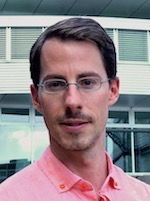
Claude Monney
|
|
It was supported by the H2020 CALIPSOplus project and focused amongst others on ESUO activities for the European synchrotron and FEL user community as well as status updates of CALIPSOplus and of the League of European Accelerator-based Photon Sources (LEAPS).
The 1st ESUO Regional Workshop will be held on August 28th, 2019, in Serbia, organized as a satellite event of the Photonica2019 conference. It will present ESUO’s aims and challenges, basics of physics of synchrotron and FEL radiation, as well as possibilities on various applications within the region. It is a great opportunity for ESUO to further develop the contact with new users from Serbia and its neighboring countries and to integrate them in the synchrotron and free-electron laser user community as well as to share knowledge and expertise amongst scientists. Moreover, CALIPSOplus is offering a dedicated Staff Exchange Program to the staff members of the partner synchrotron and FEL facilities to learn and to share experience and best practice with colleagues at other research infrastructures. One of the first success stories of this new funding program was the staff exchange between Andreas Schwarz (Radiation Source ELBE, HZDR, Germany) to Dr. Arsov, as host of the SwissFEL hosting team of the Paul Scherrer Institute in November 2018. More information about the present staff exchange can be found here. ESUO can now also be contacted via LinkedIn.
We encourage you, members of the PSI user community, to communicate to us any issues, concerns or suggestions. In this case, please contact me directly or other committee members.
Yours sincerely,
Claude Monney, Annick Froideval, on behalf of the JUSAP committee
|
|
Upcoming events
Please have a look at our conference calendar.
|
|
|
|